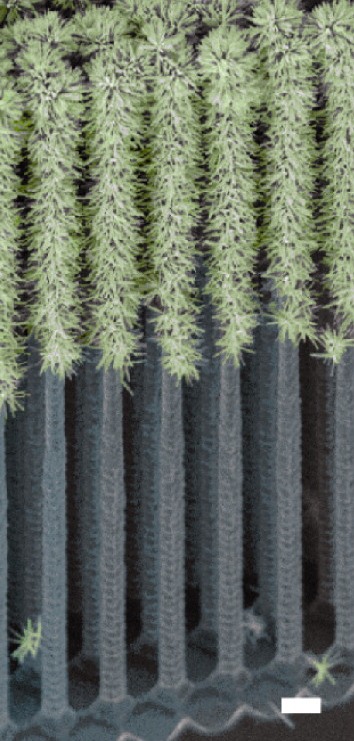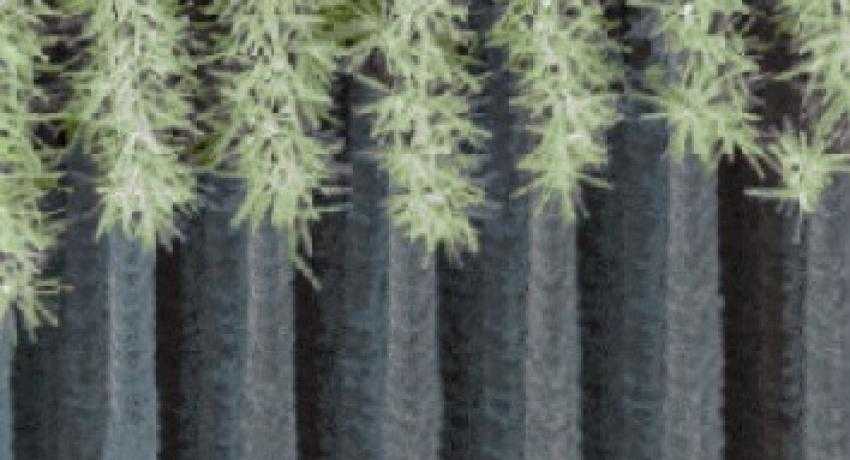LBL creates artificial photosynthesis in a solar nanoforest
 Photosynthesis, the ability of plants to create food from water and carbon dioxide with the help of the sun, has drawn the interest of scientists, who have wished to ape the process, for a long time. Now they may have done it. Late last week the Lawrence Berkeley National Laboratory announced that it made a breakthrough in creating artificial photosynthesis by creating a nanoforest.
Photosynthesis, the ability of plants to create food from water and carbon dioxide with the help of the sun, has drawn the interest of scientists, who have wished to ape the process, for a long time. Now they may have done it. Late last week the Lawrence Berkeley National Laboratory announced that it made a breakthrough in creating artificial photosynthesis by creating a nanoforest.
Noting plants’ ability to create fuel from little more than the elements, scientists have theorized that the process could be replicated to make fuels. In the artificial photosynthetic process, water is split into its constituent elements, hydrogen and oxygen. The hydrogen can then be used as fuel. With the recent discovery at LBL, it looks like they’re one step closer to making it a reality.
“A major challenge for artificial photosynthesis is to produce hydrogen cheaply enough to compete with fossil fuels,” LBL said. “Meeting this challenge requires an integrated system that can efficiently absorb sunlight and produce charge-carriers to drive separate water reduction and oxidation half-reactions,” it added.
“In natural photosynthesis the energy of absorbed sunlight produces energized charge-carriers that execute chemical reactions in separate regions of the chloroplast,” said Peidong Yang, a chemist with Berkeley Lab’s Materials Sciences Division, who led the research. “We’ve integrated our nanowire nanoscale heterostructure into a functional system that mimics the integration in chloroplasts and provides a conceptual blueprint for better solar-to-fuel conversion efficiencies in the future.” Yang and co-authors Chong Liu, Jinyao Tang, Hao Ming Chen and Bin Liu published their research “A Fully Integrated Nanosystem of Semiconductor Nanowires for Direct Solar Water Splitting” in the journal NANO Letters.
The device the researchers developed mimics the chloroplasts in green plants that carry out photosynthesis. “Our artificial photosynthetic system is composed of two semiconductor light absorbers, an interfacial layer for charge transport, and spatially separated co-catalysts,” Yang explained. “To facilitate solar water-splitting in our system, we synthesized tree-like nanowire heterostructures, consisting of silicon trunks and titanium oxide branches. Visually, arrays of these nanostructures very much resemble an artificial forest.” Albeit a really, really tiny one.
The device consists of “trees” with silicon trunks which are the hydrogen-generating photocathodes. The oxygen-generating photoanode is made of titanium oxide. “The tree-like architecture was used to maximize the system’s performance. Like trees in a real forest, the dense arrays of artificial nanowire trees suppress sunlight reflection and provide more surface area for fuel producing reactions.”
The device isn’t very efficient at this point. Thus far it’s achieved a 0.12 percent solar-to-fuel conversion efficiency, which while comparable to some real photosynthetic systems isn’t nearly good enough for commercial use. “We have some good ideas to develop stable photoanodes with better performance than titanium oxide,” Yang said. By replacing the titanium dioxide with other materials, the group may be able to push the efficiency up to single digits to start.




